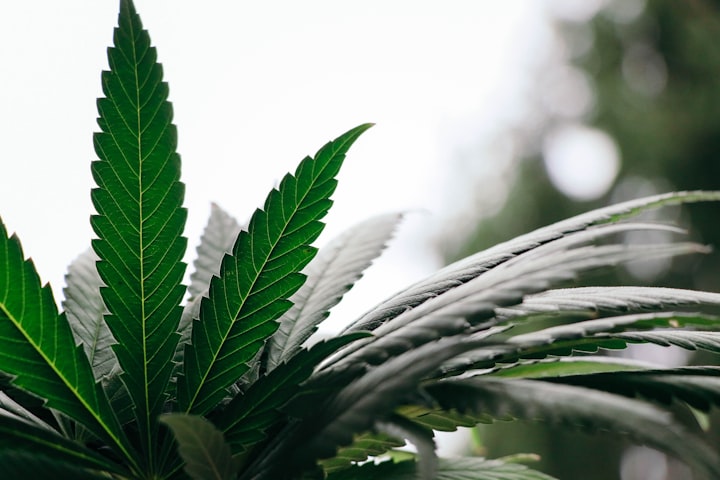Cannabinoids and Drug Development
The cannabis plant, endocannabinoids and emerging medical cannabinoid pipeline landscape

Phytocannabinoids
The cannabis plant probably evolved sometime between 34 and 6.38 million years ago, and may have originated on the Tibetan Plateau, according to the earliest convincing analysis of fossil pollen. From there, the cannabis plant reached Europe approximately 6 million years ago, and spread as far as eastern China 1.2 million years ago. Today cannabis has successfully adapted to a spectrum of environments with the help of protective compounds like (phyto)-cannabinoids.
They believe that the phytocannabinoids sprung to life thanks to an ancient colonisation of the cannabis plant’s genome by viruses. Meaning, that probably 34 to 6.38 million years ago a virus infected a plant and the phytocannabinoids synthesis started.
So far, at least 113 different cannabinoids have been isolated from the cannabis plant, with the most notable being the tetrahydrocannabinol (THC) and the cannabidiol (CBD).
In general, all cannabinoids are produced in tiny glands on the surface of the cannabis plant called trichomes (present also on many plant species), and serve to protect plants:
- by defending them against insect herbivores or against frost,
- by minimising water loss,
- by preventing of overheating or
- by attracting pollinators.
But what separates the cannabis plant from a majority of other trichome-plants is the psychoactive properties of its constituents, namely the THC.
So, why does the cannabis plant produce a psychoactive compound like THC?
The simplest answer is for survival. Since plants do not have an immune system like animals, they tend to produce chemical cocktails (like THC) to protect them against infections, by acting as natural pesticides or anti-microbials.
Studies do in fact show that cannabinoids, including THC, have anti-microbial properties.
Moreover, THC may protect the plant from ultraviolet light since researchers have found that by exposing cannabis plants, from different areas of the world, to UVB rays through irradiation these plants produced more THC than those that were not exposed, suggesting a protective function.
But while the cannabis plant produces phyto-cannabinoids, many animals produce endo-cannabinoids.
Endocannabinoid system in vertebrates
All vertebrates and invertebrates (except insects) are known to have an endocannabinoid system (ECS), formed by
- the cannabinoid receptors (CBR: CB1R and CB2R),
- the endocannabinoids molecules, which are endogenous lipid-based retrograde neurotransmitters, such as anandamide (analogous to THC) and 2-AG, that both bind to CBRs. And
- the two enzymes that synthesise and degrade the cannabinoids, namely the fatty acid amide hydrolase (FAAH) and the monoacylglycerol lipase (MGL). As a a matter of fact, the CBD (cannabidiol) affects the endocannabinoid system by modifying the activity of these enzymes (and associated transport proteins) and thus the concentration of anandamide the “default” endocannabinoid.
So far, the most primitive invertebrate found to express a CBR is the sea-squirt (tunicate), an animal which evolved over 600 million years ago (that predates the earliest species of the cannabis plant), while the ECS is ubiquitously present in the animal kingdom representing a fundamental signalling system of all vertebrates, by playing a vital role for helping maintain body homeostasis.
In fact, the cannabinoid receptors sit on the surface of all cells and they “listen” to everything that happens outside of them, transmitting then this information to the inside of the cell. When something is off-balance outside, they kick-start the appropriate cellular response.
In particular, CB1R is one of the most abundant cannabis receptors expressed in the brain (and in peripheral tissues, such as endothelial cells, adipocytes and peripheral nerves) and also interacts with THC to get people high. While CB2R is the most abundant cannabis receptor expressed outside of the nervous system, in places like the immune system, gastrointestinal tract, peripheral nervous system and microglia of the brain.
Probably the endocannabinoids evolved initially (400 million years ago) in the ancient nerve cells that communicate with each other by sending electrochemical signals, as part of the response to stress (oxidation and inflammation). But since neurons after a while they don’t like to get too much input—simply because it can be toxic if they get overloaded—that’s where endocannabinoids come in, by allowing a receiver neuron to regulate how much input can receive and they do so by sending retrograde signals (endocannabinoids) back to an overactive sender neuron telling them to stop firing.
Moreover, the two naturally occurring endocannabinoids — Anandamide and 2-AG — are also found in human breast milk and are crucial to human development, from embryonic development and protection of neurons in post-natal brain development, to immunosurveillance.
But the brain isn’t the only organ that needs to maintain homeostasis via the ECS.
Everything inside the body, from the digestive to the immune system, needs to carefully regulate how its cells are functioning just by having an ECS.
For all the above reasons, the endocannabinoid system is a promising drug target for the treatment of a variety of health conditions, with the global cannabis pharmaceuticals market size being valued at $ 67.0 million in 2019 and expected to grow at a compound annual growth rate (CAGR) of 76.8% from 2020 to 2027 (Source).
Cannabinoid Drug Development Startups
To date, research has shown that medical marijuana (mainly the two main cannabinoids from the cannabis plant: THC and CBD) has a therapeutic value for health conditions such as: chronic pain, cancer, arthritis, diabetes, depression, anxiety and many more.
For example, THC can:
- increase appetite,
- reduce nausea from chemotherapy,
- decrease pain and inflammation (swelling and redness),
- reduces muscle spasm in paraplegics and
- improve sleep.
While, CBD can:
- offset anxiety and depression,
- treat epilepsy (under the brand name Epidiolex),
- reduce PTSD symptoms,
- treat opioid addiction,
- alleviate amyotrophic lateral sclerosis (ALS) symptoms (using a combination of THC and CBD),
- relieve unmanageable pain (using equal proportions of THC and CBD),
- ease diabetic complications,
- protect against neurological diseases and
- inhibit arthritis symptoms (using Sativex—a CBD-based botanical drug approved in the UK in 2010).
Let's see now the emerging cannabinoid pipeline landscape.
So far, some of the medical cannabinoids emerging drugs (source) have been:
- BX-1: an oral solution containing dronabinol, a synthetic form of THC, developed by Bionorica SE and currently in phase III of drug development for the treatment of patients with multiple sclerosis, not showing sufficient response to their current anti-spasticity treatment.
- Lenabasum: a novel, small molecule that binds as an agonist to the cannabinoid receptor type 2 (CB2) taht resolves inflammation and limits fibrosis in animal and human models of disease. Lenabasum is developed by Corbus Pharmaceuticals and is in phase III of drug development for the treatment of dermatomyositis, systemic scleroderma, cystic fibrosis, systemic lupus erythematosus etc.
- THX-110: a proprietary combination drug based on dronabinol (a synthetic THC) and PEA (palmitoylethanolamide is a fatty acid amide showing some pharmacodynamic similarities with THC). The drug is currently in phase II and is a being developed by Therapix Biosciences for the treatment of symptoms related to Tourette syndrome (TS), as well as obstructive sleep apnea (OSA) and chronic pain.
- Cannabis oil: developed by TO Pharma is in phase II for the treatment of hidradenitis suppurativa (painful, long term skin condition that causes abscesses and scarring on the skin) and agitation related to dementia. The cannabis oil is made out of extract from the Avidekel oil (containing 30% CBD and 1.5% Δ9-THC) and olive oil. Each Avidekel oil drop is approximately 0.04 mL in volume containing about 12 mg CBD and 0.6 mg Δ9-THC.
- VSN16R: an orally active small molecule compound developed by Canbex Therapeutics, a spin-off of University College London, and currently in phase II for the treatment of spasticity in people with multiple sclerosis.
- INM-755: a cannabinol topical cream for the treatment of epidermolysis bullosa (EB) developed by InMed Pharmaceuticals. INM-755 cream for EB is the first, and currently the only, cannabinol formulation being tested in clinical trials as a therapeutic product.
- CNTX 6016: a highly selective investigational cannabinoid receptor 2 (CBR2) agonist developed by Centrexion Therapeutics and currently in phase-I/II clinical trials for neuropathic pain.
- PPP011: a cannabidiol/delta 9 tetrahydrocannabinol, also known as QIXLEEF, developed by Tetra Bio-Pharma for patients with advanced cancer pain.
- Nantheia A1002N5S: an investigational drug developed by ANANDA Scientific using cannabidiol (50 mg CBD per softgel capsule) in ANANDA’s proprietary Liquid Structure delivery technology, as a treatment for post-traumatic stress disorder (PTSD) symptoms and neurocognitive impairment in patients with PTSD and with PTSD comorbid with traumatic brain injury (TBI) in a phase II study.
- Dronabinol: a man-made form of THC used to treat loss of appetite that causes weight loss in people with AIDS. Dronabinol, developed by Daisy Pharma Opioid Venture LLC, is also used to treat severe nausea and vomiting caused by cancer chemotherapy and currently in a phase II study.
The list of course goes on (source), with many more key cannabidiol emerging drugs like BTX 1503, BTX1801 (a synthetic CBD that eradicated Staphylococcus aureus in the nose in phase IIa study), TN-TC11G, OWC MGC cream, BTX1702, e3D-05, e3D-01, e3D-03, EPM301/cannabidiolic acid methyl ester (More Potent Than CBD, THC), all of them currently in clinical investigation.
So far, GW Pharmaceuticals —with Sativex that dominated in 2019 the cannabis pharmaceuticals market with a revenue share of 83.0%, for the treatment of spasticity caused due to multiple sclerosis—has been a pioneer in the plant-derived cannabinoid-based pharmaceuticals, however, AbbVie Inc. (Alkem Labs acquired anti-nausea drug Marinol/dronabinol from AbbVie) and Insys Therapeutics, Inc. (with Syndros, a synthetic THC product) are also prominent players in the cannabis pharmaceuticals market.
Moreover, as big pharmas are turning their focus on the cannabis industry, they are sponsoring clinical trials and they are entering into partnerships with cannabinoid startups.
In particular, some smaller but emerging companies (source) with cannabis products in clinical investigation are: Therapix Biosciences (THX-110 for the treatment of Tourette syndrome and obstructive sleep apnea; THX-160 for the treatment of pain; and THX-210 for the treatment of autism spectrum disorder and epilepsy), Botanix Pharmaceuticals, Tilray (a global leader in cannabis research, cultivation, processing and distribution), One World Cannabis, Epm Group, Zelira Therapeutics (HOPE™ line Zelira's top-selling treatment developed for autism patients), Pascal Biosciences, Cannovex, Can-Fite Pharma, GB Sciences (with PhAROSTM an AI-driven platform for drug discovery), Serina Therapeutics, Oxford Cannabinoid Technologies and Cannabis Science.
AI and cannabinoids drug discovery
Finally, apart GB Sciences, another company that is doing cannabidiol drug development with artificial intelligence drug discovery platforms is Revive Therapeutics. Revive Therapeutics is a life sciences company with a cannabinoid pharmaceutical portfolio that focuses on rare inflammatory diseases. The company was granted FDA orphan drug status designation for the use of CBD to treat autoimmune hepatitis (liver disease) and ischemia and reperfusion injury from organ transplantation.
For this reason, Revive recently (February 2021) entered into a clinical trial agreement with The Trustees of Indiana University to initiate a proposed Phase 2 clinical study entitled, “Use of Cannabidiol as an adjunct therapy for difficult to treat autoimmune hepatitis". Upon the receipt of permission from the FDA to proceed with this study under an IND, Revive will proceed to evaluate a potential study with CBD for ischemia, reperfusion injury and other liver diseases.
Regarding AI, through its research collaboration agreement (November 2020) with PharmaTher Inc. (a psychedelics pharmaceutical company accelerating the development of psilocybin in the treatment of cancer and the discovery of novel uses of undisclosed psychedelic compounds), Revive will leverage PharmaTher’s panaceAI™ discovery AI platform to discover new uses of undisclosed psychedelic compounds. Additonally, on Nov 13, 2019, Revive acquired Greeninsightz, a Canadian AI data software company using patented AI and ML solutions for social discovery in the cannabis industry.
Thank you for reading 💙
And if you liked this post why not share it?
PS:
For more you can read "The Cannabis Industry is Rife with Fraudsters. The FDA is AWOL" just published in Politico and how FDA’s failure to regulate a multibillion-dollar market is a detriment to consumers and businesses alike.






Comments
There are no comments for this story
Be the first to respond and start the conversation.